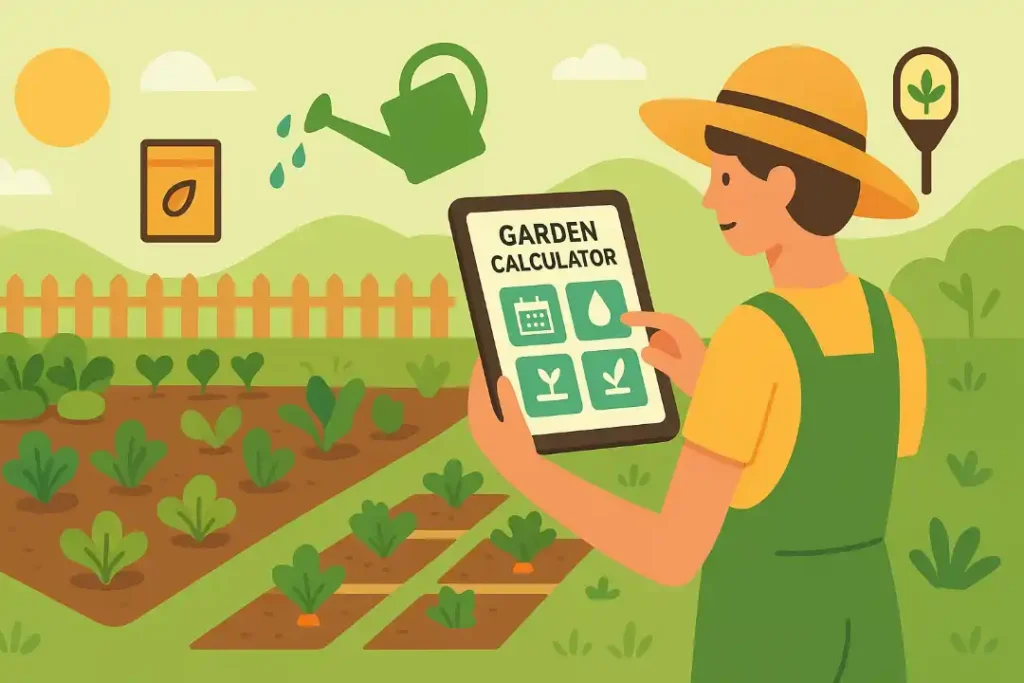Hey! Let’s Talk About How to Grow a Garden Calculator: Your Secret Gardening Buddy

So, you love your garden, but sometimes it feels like plants have their own plans, right? One day they’re thriving, the next day—oops—something’s off. Don’t worry, you’re not alone. That’s where a grow a garden calculator comes in. Think of it as your friendly gardening sidekick who gives you hints, tips, and gentle nudges to keep things on track.
Why You’ll Actually Want One
Back in the day, gardeners mostly guessed—“Hmm, let’s plant this here.” Sometimes it worked, sometimes it didn’t. With a grow a garden calculator:
- You kinda know how far apart your plants should be
- You’ll get a rough idea how many seeds to buy (no more surprises)
- You can plan when to harvest without fretting
- And figure out watering schedules without drowning your veggies
Basically, it makes gardening less stressful and more fun.
Plant Spacing: Give Plants Room to Breathe
Ever notice how some gardens look cramped and sad? That’s because plants need space, just like us. Too close, they fight for sunlight and water.
For example:
- Tomatoes: about 18–24 inches apart, rows around 36 inches
- Lettuce: tiny babies, just 6 inches apart, rows 12 inches
A calculator tells you all this without you having to guess—so your garden doesn’t look like a jungle.
Seeds: Buy Just the Right Amount
Buying seeds can be tricky. Too few = sad empty patches. Too many = wallet crying. The Seed Calculator keeps it real:
- It looks at how likely seeds are to sprout
- Adds a little extra just in case (because nature can be funny)
So your garden ends up full, and you don’t waste money.
Harvest Timing: Pick ‘Em at the Right Moment
Nobody wants mushy veggies or flavorless fruits. A grow a garden calculator helps by using:
- Days-to-maturity from your seed packet
- Local weather vibes (hot = fast, cool = slow)
Instead of exact dates, it gives a window—so you can plan meals, jams, or just show off your harvest to friends.
Watering: Keep ‘Em Happy
Watering seems simple but can be tricky. Overwater = sad roots, underwater = thirsty plants. The calculator helps by:
- Checking your plant type
- Considering soil (clay vs sandy)
- Thinking about season and weather
Basically, it’s like having someone whisper: “Hey, these babies need a drink now.”
Fancy Features for Garden Nerds
Some calculators even do:
- Connect with smart irrigation
- Use soil sensors
- Track live weather
It’s like a mini garden dashboard, showing what your plants need right now—without you hovering around.
Why It’s Worth It
- Save money on seeds and fertilizers
- Prevent crop oopsies
- Boost yields (home gardens +20–30%, commercial gardens even more!)
Quick Start Tips
- Measure your garden space (don’t eyeball it).
- Check your soil type (easy DIY test).
- Start with one function—plant spacing is a good first step.
- Slowly add more functions as you get comfy.
- Keep notes—future you will thank present you.
Bottom line: Using a grow a garden calculator is like having your own friendly, slightly nerdy gardening buddy. It mixes old-school wisdom with modern smarts, helping you grow healthier plants, bigger yields, and fewer headaches.
Trust me—once you start using them, gardening stops feeling like guesswork and starts feeling… fun! 🌱
Also read: What Is Today’s Date?
Leave a Comment